
Buskerud is a traditional region and a former a county in Norway, bordering Akershus, Oslo, Oppland, Sogn og Fjordane, Hordaland, Telemark and Vestfold. The region extends from the Oslofjord and Drammensfjorden in the southeast to Hardangervidda mountain range in the northwest. The county administration was in modern times located in Drammen. Buskerud was merged with Akershus and Østfold into the newly created Viken County on 1 January 2020.

Nore og Uvdal is a municipality in Buskerud county, Norway. It is part of the traditional region of Numedal. The administrative centre of the municipality is the village of Rødberg.

Nes is a municipality in Akershus county, Norway. It is part of the traditional region of Romerike. The administrative centre of the municipality is the village of Årnes.

Åsnes is a municipality in Innlandet county, Norway. It is part of the traditional region of Solør. The administrative centre of the municipality is the village of Flisa, which is also the largest town in the municipality with around 2,100 people.

Sør-Aurdal is a municipality in Innlandet county, Norway. It is part of the traditional region of Valdres. The administrative centre of the municipality is the village of Bagn.

Etnedal is a municipality in Innlandet county, Norway. It is part of the traditional region of Valdres. The administrative centre of the municipality is the village of Bruflat.

Nord-Aurdal is a municipality in Innlandet county, Norway. It is part of the traditional region of Valdres. The administrative centre of the municipality is the village of Fagernes.

Vestre Slidre is a municipality in Innlandet county, Norway. It is part of the traditional region of Valdres. The administrative centre of the municipality is the village of Slidre. The old municipality of Slidre was divided into Vestre Slidre and Øystre Slidre in 1849.

Øystre Slidre is a municipality in Innlandet county, Norway. It is part of the traditional region of Valdres. The administrative centre of the municipality is the town of Heggenes.

Vang is a municipality in Innlandet county, Norway. It is part of the traditional region of Valdres. The administrative centre of the municipality is the village of "Vang i Valdres". The municipality of Vang was established on 1 January 1838.
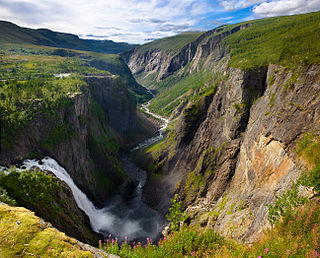
Eidfjord is a municipality in Hordaland county, Norway. The municipality is located in the traditional district of Hardanger. The administrative centre of the municipality is the village of Eidfjord, where the majority of the municipal population lives. The other major population centre in the municipality is the village of Øvre Eidfjord.
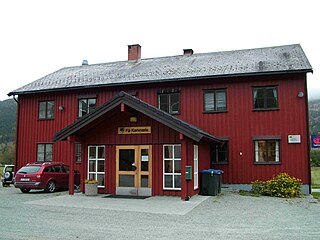
Flå is a municipality in Buskerud county, Norway. The administrative centre of the municipality is the village of Flå. The municipality of Flå was established when it was separated from the municipality of Nes on 1 January 1905. The municipality lies at the most southeasterly point in the valley and traditional region of Hallingdal.

Gol (help·info) is a municipality in Buskerud county, Norway. It is part of the traditional region of Hallingdal. The administrative center of the municipality is the village of Gol which is also the population center. Gol was established as a municipality on 1 January 1838. The area of Hemsedal was separated from Gol in 1897 to become a separate municipality. The municipality of Gol is bordered to the north by the municipality of Nord-Aurdal, to the east by Sør-Aurdal, to the south by Nes, and to the west by Ål and Hemsedal.
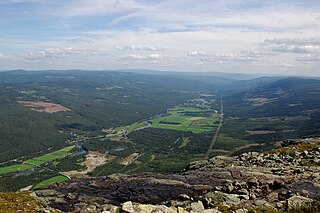
Hemsedal is a municipality in Buskerud county, Norway. It is part of the traditional region of Hallingdal. The administrative centre of the municipality is the village of Trøym. Hemsedal lies on the Norwegian National Road 52. Hemsedal is located 220 km (136.70 mi) northwest of Oslo and 273 km (169.63 mi) from Bergen. In 1897, Hemsedal was separated from the municipality of Gol to become a municipality of its own.
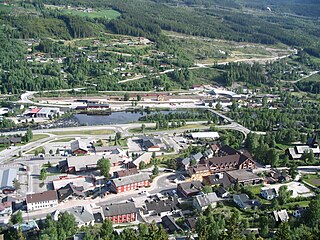
Ål is a municipality in Buskerud county, Norway. It is part of the traditional region of Hallingdal. The administrative centre of the municipality is the village of Ål. The parish of Aal was established as a municipality on 1 January 1838. The area of Hol was separated from the municipality of Aal in 1877 to become a separate municipality.

Hol is a municipality in Buskerud county, Norway.

Hallingdal is a valley as well as a traditional district located in Buskerud county in Norway. It consists of six municipalities: Flå, Nes, Gol, Hemsedal, Ål and Hol.

Nesbyen is a town in Nes municipality in the county of Buskerud, Norway. Nes is the administrative center of Nes municipality. Nes is located in the traditional district of Hallingdal.
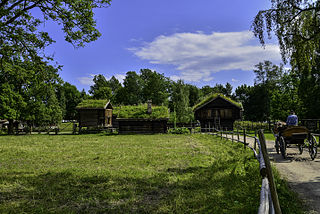
Hallingdal Museum Nesbyen is an open-air museum at Nesbyen within Nes in Buskerud, Norway.
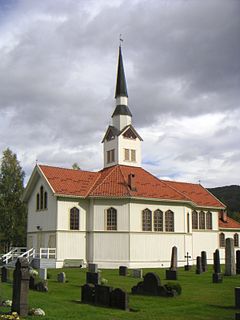
Nes i Ådal is a small village in the valley of Ådal in the municipality Ringerike in Buskerud, Norway.


























